Tips for Turkey’s! Leave a reply
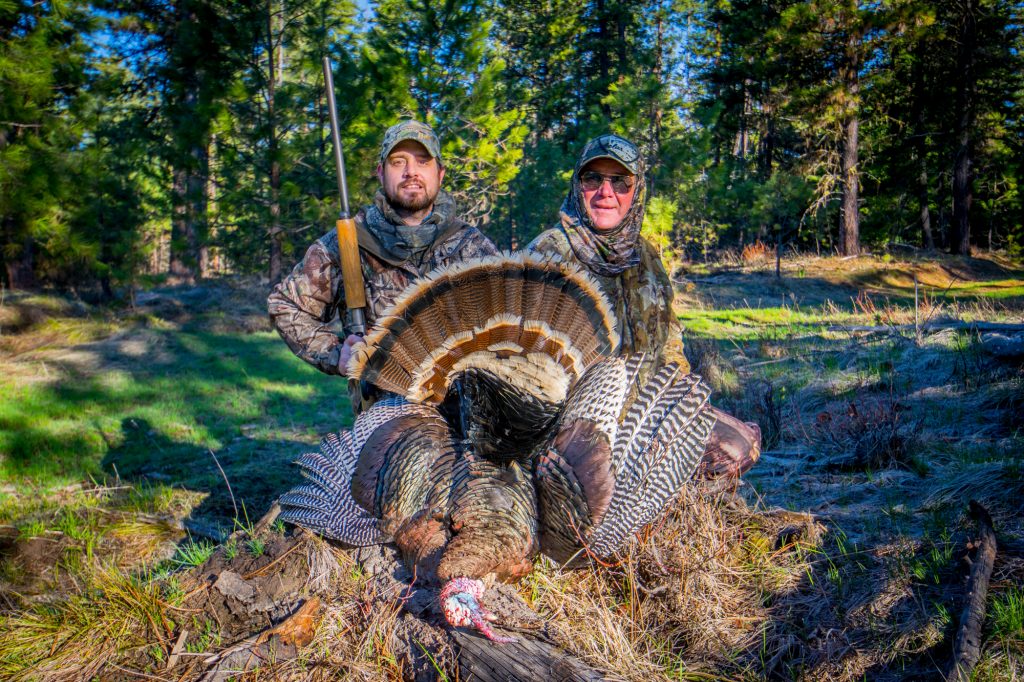
Tip’s for Turkey’s!
by Jason Brooks
Turkey seasons are about to embark in the Pacific Northwest with a few western states already underway. Preparing now for the early part of the season will help lead to success. Here are few things to consider before you head out to the turkey woods this spring.
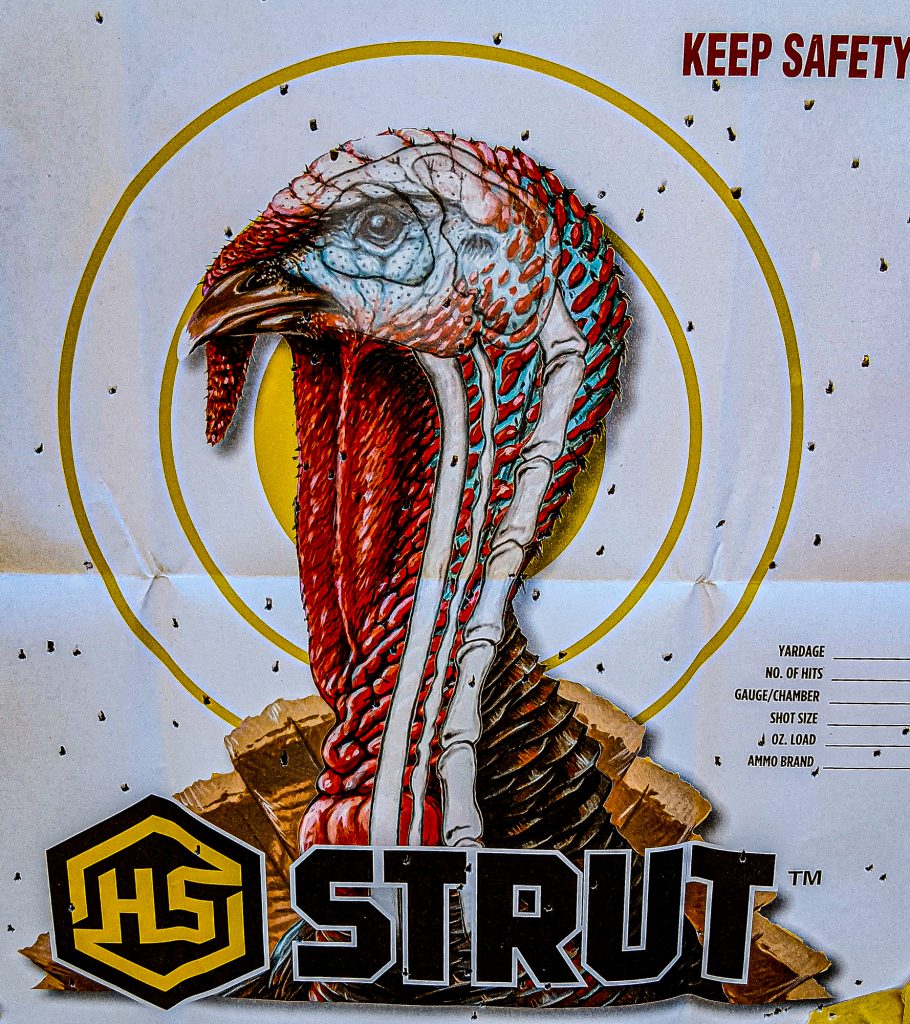
Pattern your gun.
We often hear that you should “pattern” your shotgun. What this really means is to find a load that will be a tight pattern with the choke you are using. Start with an after-market turkey choke or at least a full or extra-full choke. Try a variety of shot shells from different manufacturers since each one could use a different wad, shot size or mix/blend, and powder. Special turkey loads cost more than the standard load but with good reason. Ammunition companies will often find a mix of shot sizes, shot material such as tungsten or lead coated with copper, design a special wad and cup, and powder loads. Some will even use all of these. All of this adds to the cost of production which is passed onto the purchaser. A standard “high brass” size #6 lead shot load will work if you can’t find or afford the special turkey loads. One thing that the turkey loads do is allow for a longer distance as they are often a high dram equivalent (this is a term in the shotgun world for a “hot load”) and use dense metals such as tungsten for shot such as the Browning TSS loads. The idea of “patterning” your shotgun is to see which loads stay tight at the farthest intended distance you plant to hunt. For turkey hunting this is about 40 yards.
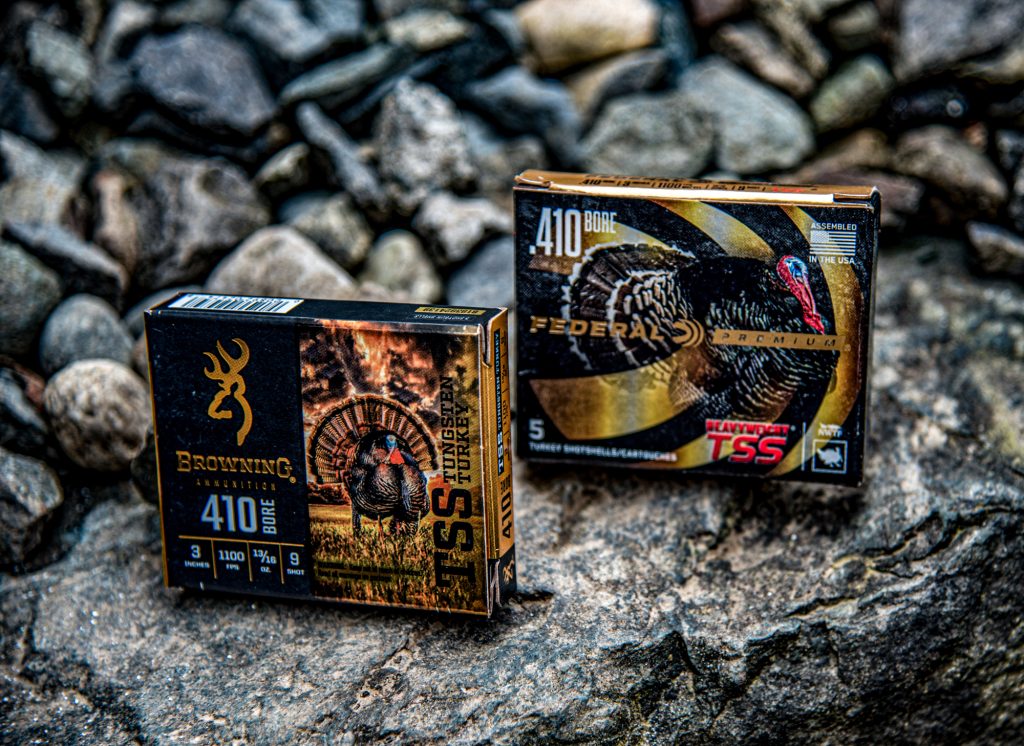
Don’t get hung up on gauge. Some hunters think they need a 10 gauge goose gun to hunt turkey when in reality a .410 can be just as deadly. Shotguns are an interesting weapon and most hunters that aren’t used to using them don’t realize that a .410 and a 10 gauge shooting size #6 shot at 1100 fps are hitting equally as hard. The difference is the amount of shot or pellets that are going downrange. One ounce of size #6 shot is about 225 pellets. A 10 gauge shooting 1 ¼ ounces is pushing about 281 pellets out the barrel and a .410 shooting 11/13 of an ounce is shooting 190 pellets. You have more chances using a 10 gauge than a .410 but both are just as deadly since it only takes one pellet hitting the brain.
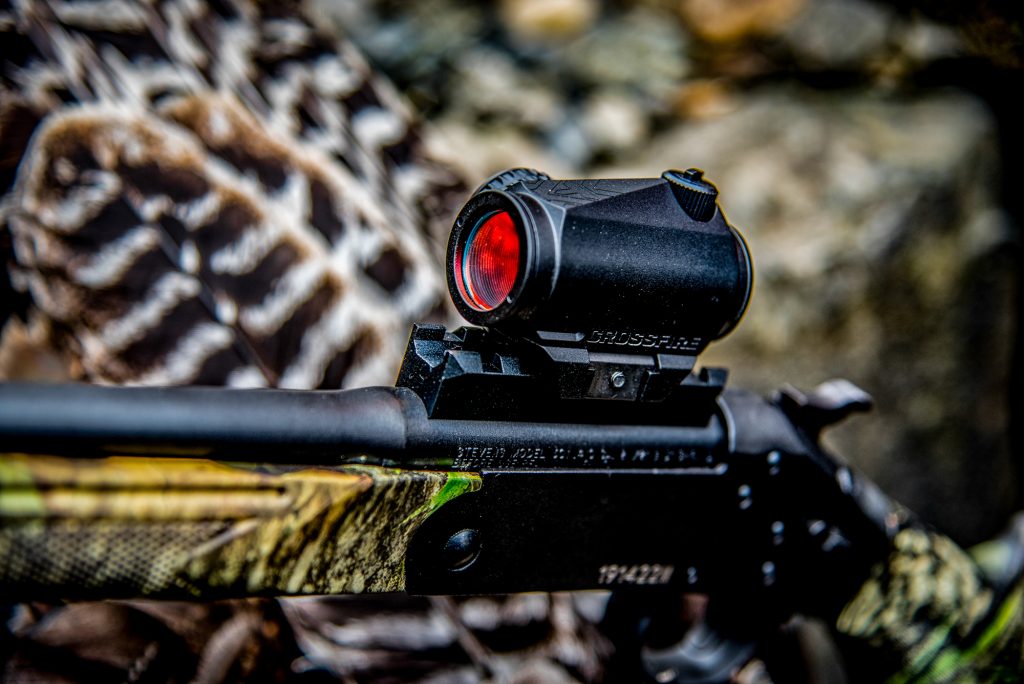
Use a Red Dot Sight.
Now that you have your shotgun shooting a tight pattern it is time to think about sights. The gold bead is the standard shotgun “sight” but it really just allows you to point the shotgun in the right direction. For flying quail with an open choke this is fine but when you are trying to shoot a turkey’s head for a quick kill and little meat damage you need to pinpoint your aim. A red dot sight is the best way to do this. Some use magnification and others don’t. Be sure to check your local game regulations to see if a glass or magnification sight can be used. A low magnification red dot works really well as it allows you to shoot with both eyes open and keep your peripheral vision. The best part is that no matter where the red dot is in the scope all you have to do is put it on the turkey’s head and it’s on target. The Crossfire by Vortex has a 2MOA dot which means it is small, won’t cover the birds head, and is accurate. Vortex designed this sight for multiple uses and comes with two bases, a tall “see through” base for AR rifles and a low base for shotguns and handgun. Easy to mount and sight in and offers several brightness settings including very bright which makes it easy to see in full sunlight. Using a red dot will increase the accuracy of your shotgun for turkey’s. You will be surprised how far off that gold bead really is once you use one.
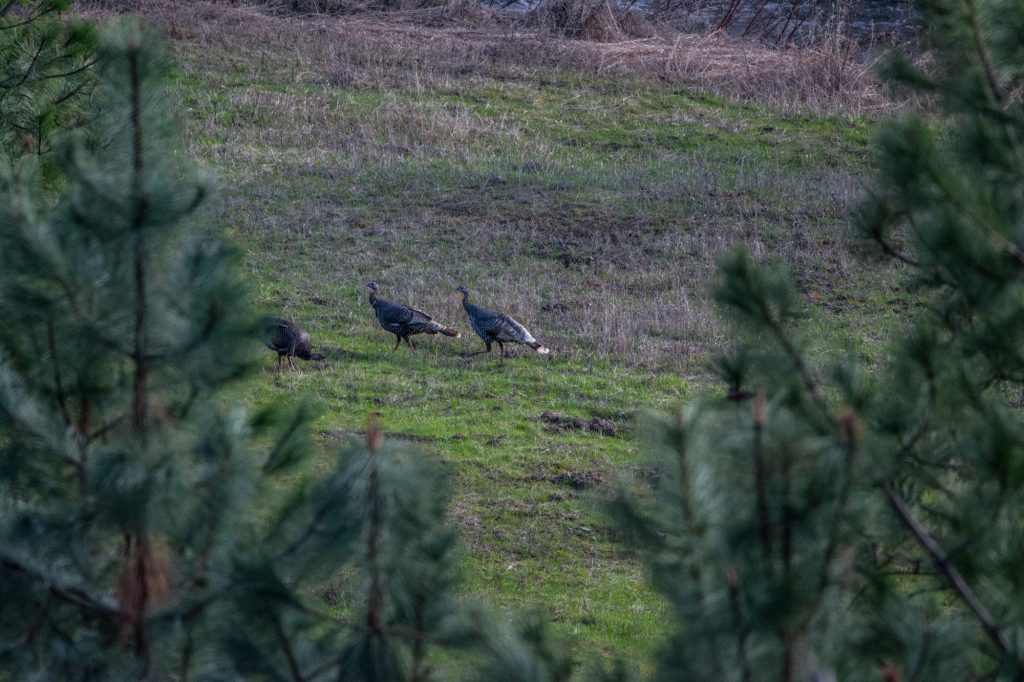
Start Scouting Now.
Pre-scouting your area will allow you to find roosting areas, feeding areas and any possible issues with private land. Turkey’s like farmlands but will roost in nearby forest. A lot of the farmland is private and some owners don’t allow hunters. Often you will find the roosting areas on public land and that means you can intercept the birds when they come out of the roost and head for the fields. When scouting for birds you don’t always need to see them. Finding their sign will let you know you are in the right spot. It is smarter to scout during the day and look for sign such as scat, scratching/dusting areas and roosting trees. Leave the birds alone while they feed in fields during mid-day. If you push birds away, then you run the risk of them not returning when the season opens.
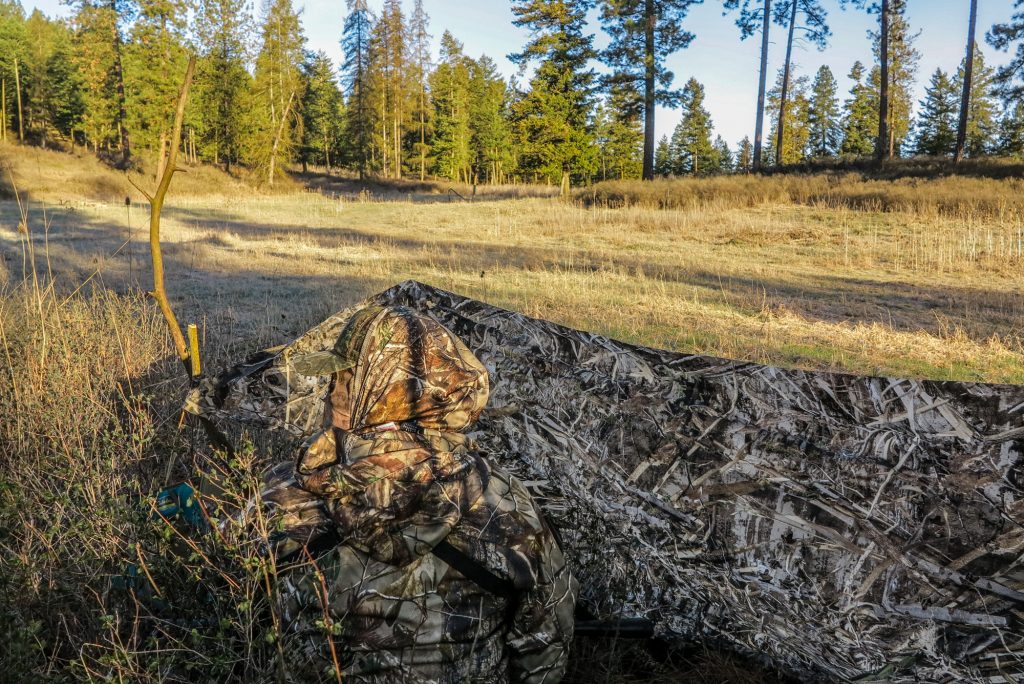
Concealment is important.
Turkeys have really good eyesight and very good hearing. Be sure to match your camo to the surrounding area and use a blind if possible. This can be something as simple as a piece of camo fabric, burlap with twigs or some natural brush. Last spring we heard a gobble just over the ridge and when we gave a locate call the Tom came running. With no time to set up a blind, one of us sat behind a large stump while the other leaned into a pine tree. It worked as the bird never saw us.
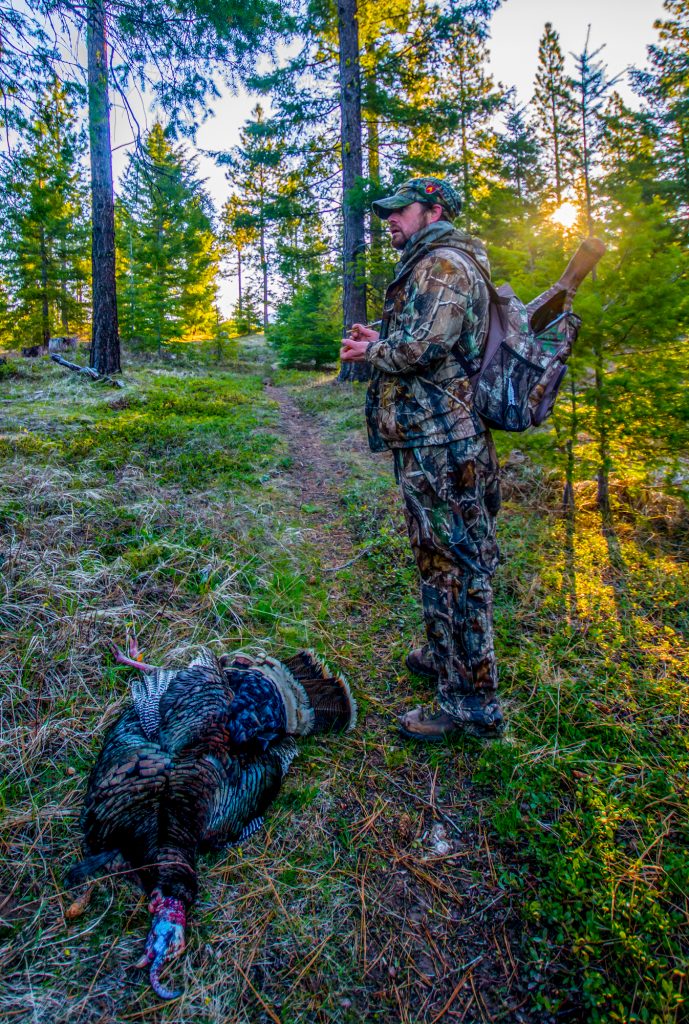
Learn to call.
Practice your calling before you go hunting. There a several resources on-line for calling and which sounds to make. Remember that turkeys flock together and if you give a sharp yelp this often means danger and will put the birds on alert. Instead a soft purr and some clucks of a lone hen often draws in Tom’s. There are several types of calls on the market and each one is fun to learn and have their own time and place. Don’t forget a crow, owl, or even a coyote howl call to locate birds. Tom’s gobble at just about any threat and will reveal their location by doing so.
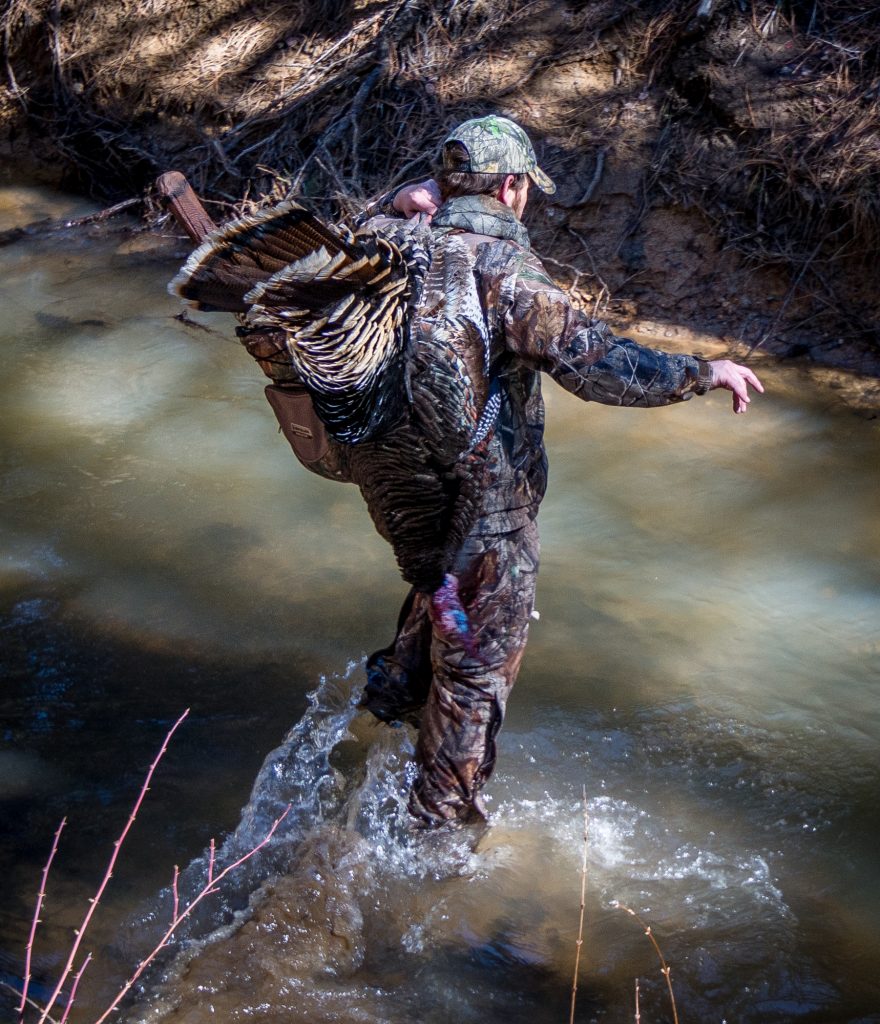
Be Prepared for Runoff and be Bug Aware.
Springtime means warming weather, melting snow, rushing creeks and standing water when the bugs come out. Mosquitos are a nuisance and so are gnats but it is ticks that are the most worrisome. They are also a food source for Turkeys so where you find the birds you find ticks. Permethrin is a tick repellent that is often used but be sure to read the directions carefully. Apply it a day or two before to your clothes and let it dry. Never let it come into contact with your skin. Other bugs to keep an eye out for are wasp, fire ants, and other biting insects. Don’t forget snakes will be coming out too.
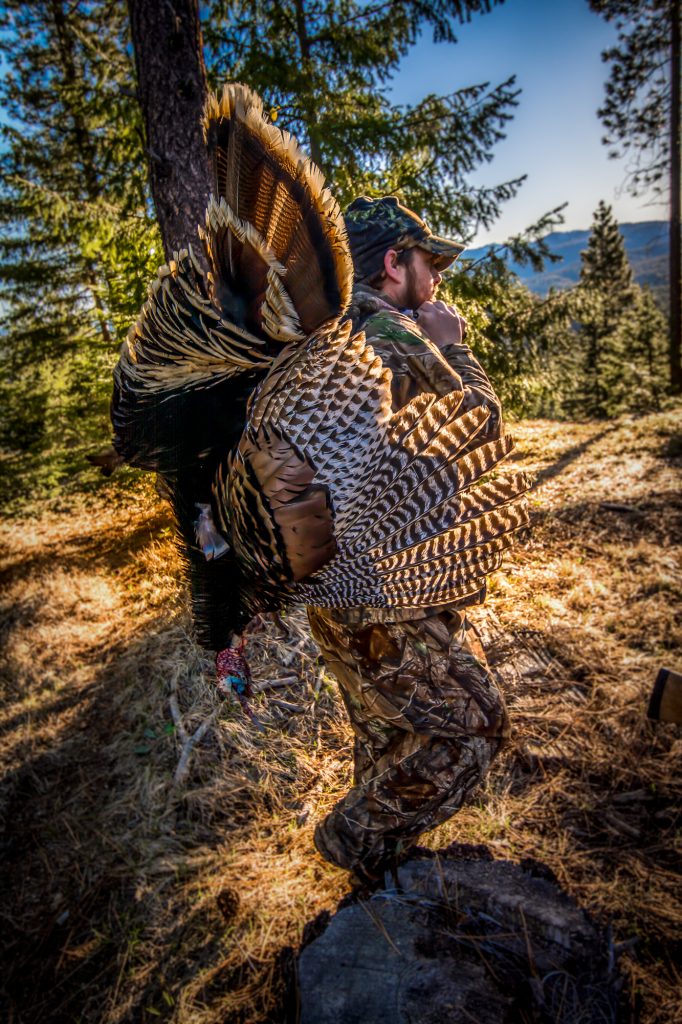
Turkey hunting is a lot of fun. It is a great way to get out hunting in the spring and explore some new areas. It is a type of hunt you can do for a few hours in the morning or spend a few days afield and is often one of the best times to be outside.
Jason Brooks -The Outdoor Line Field Editor

